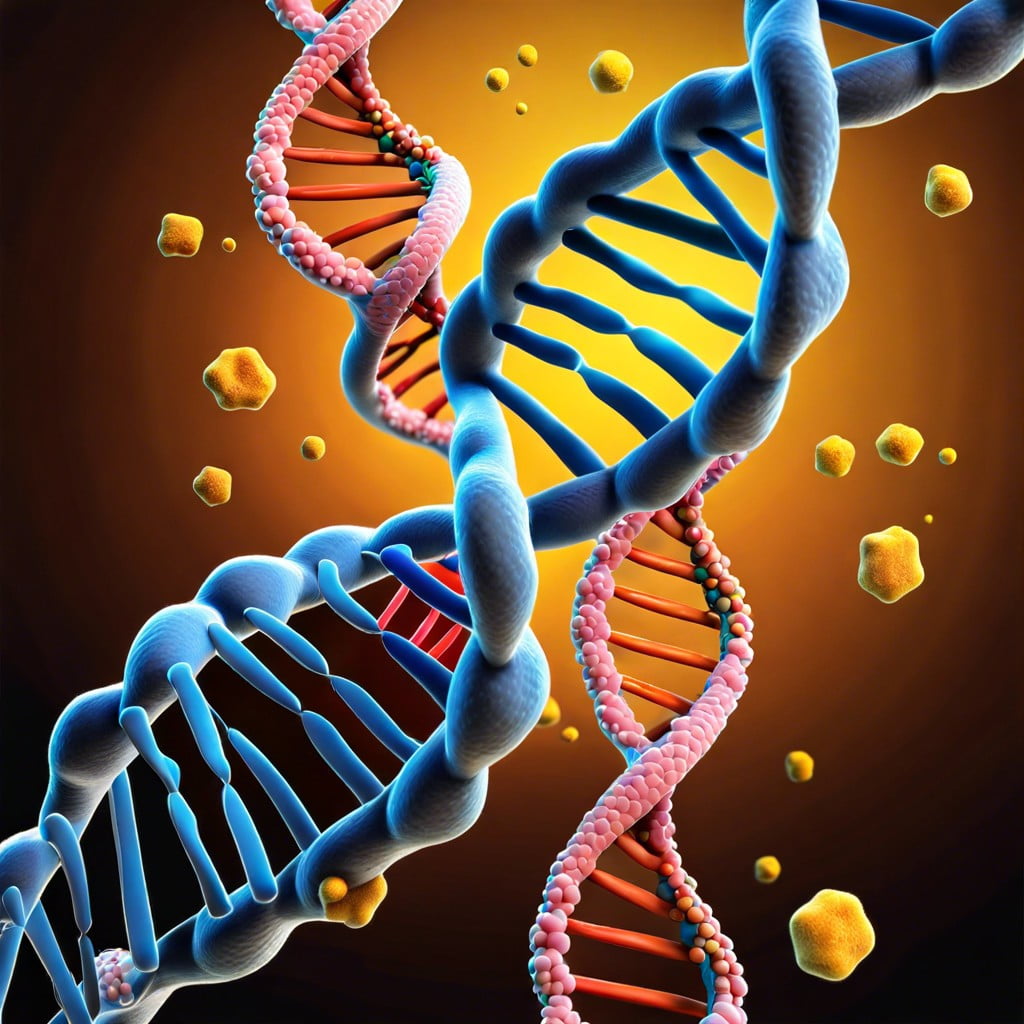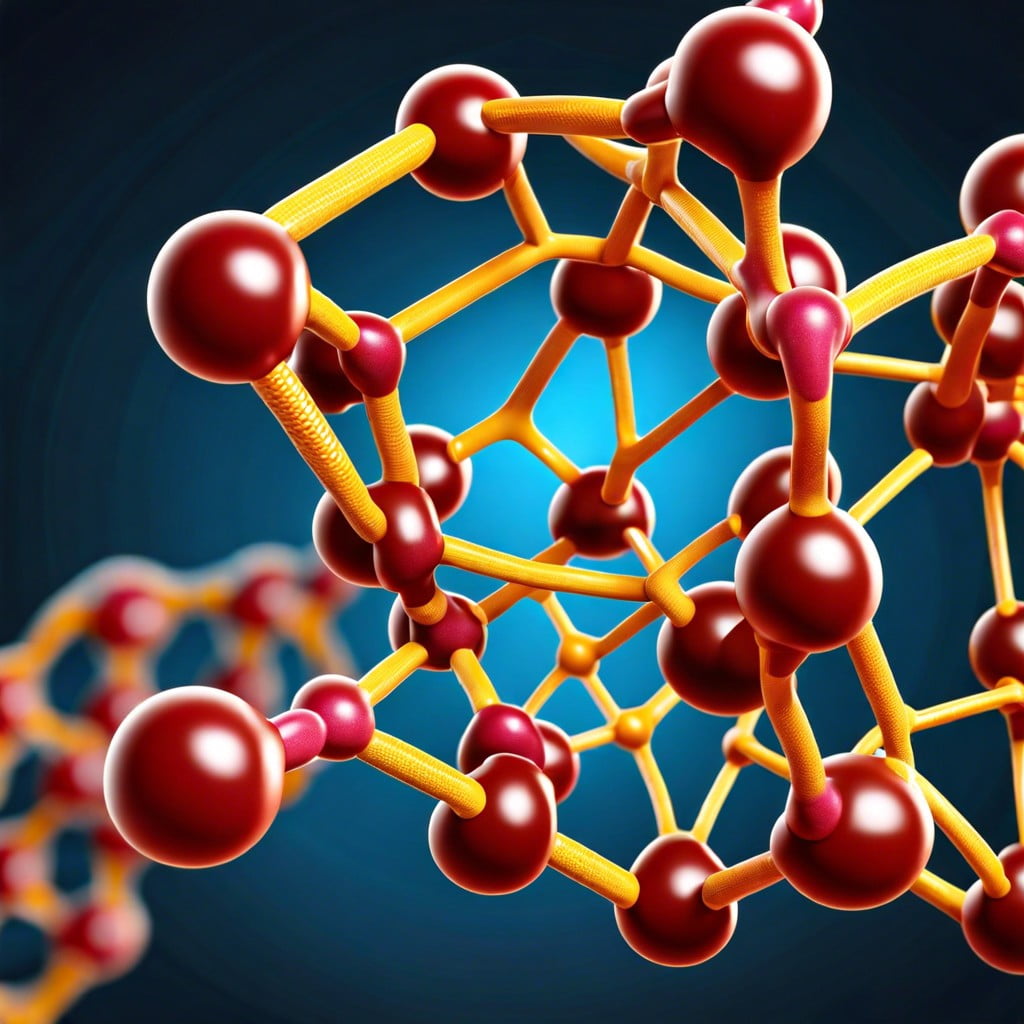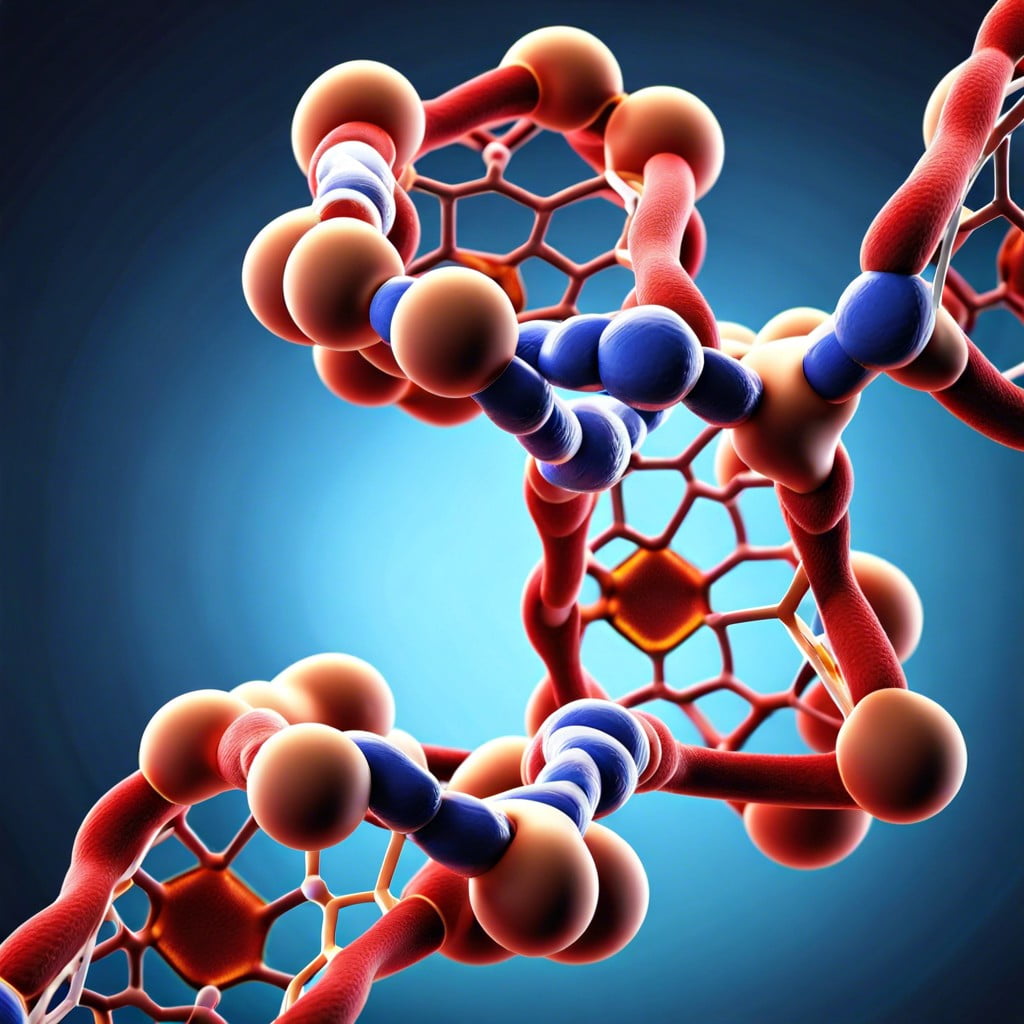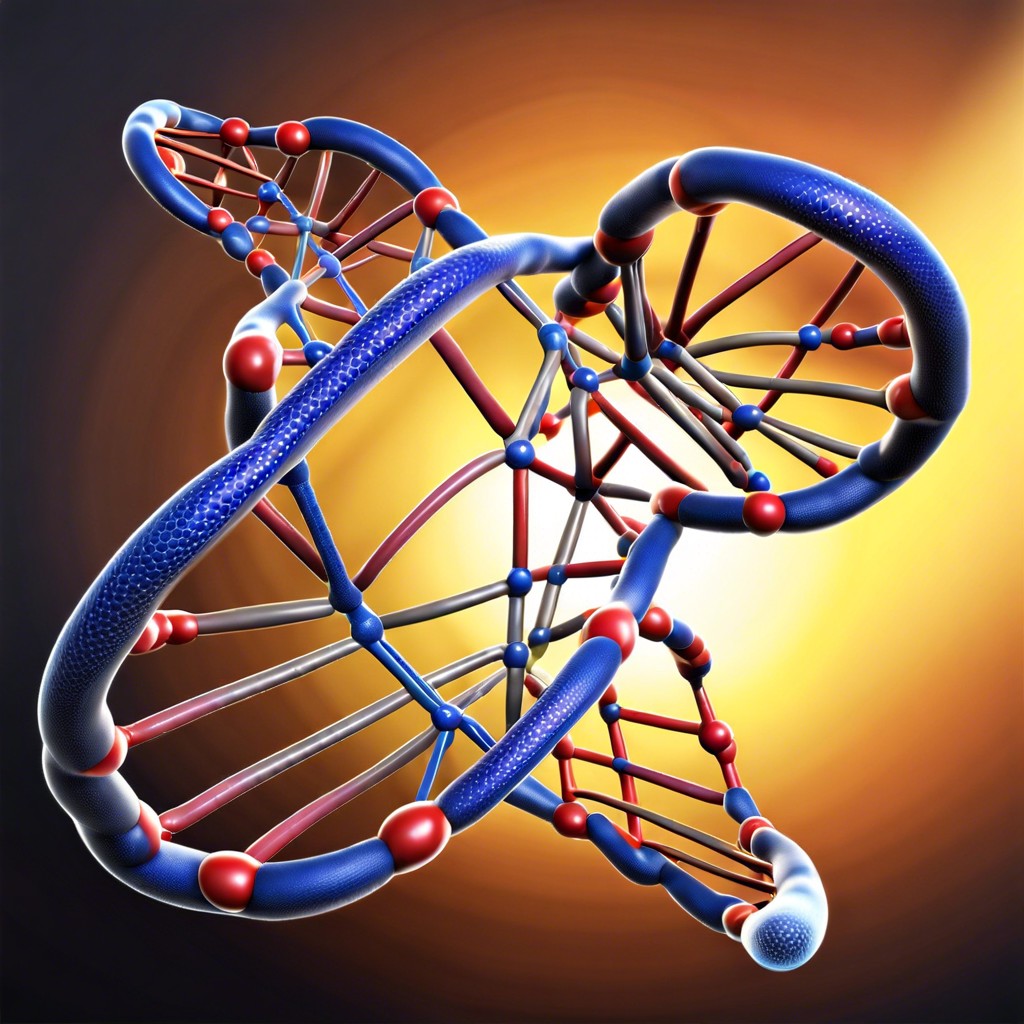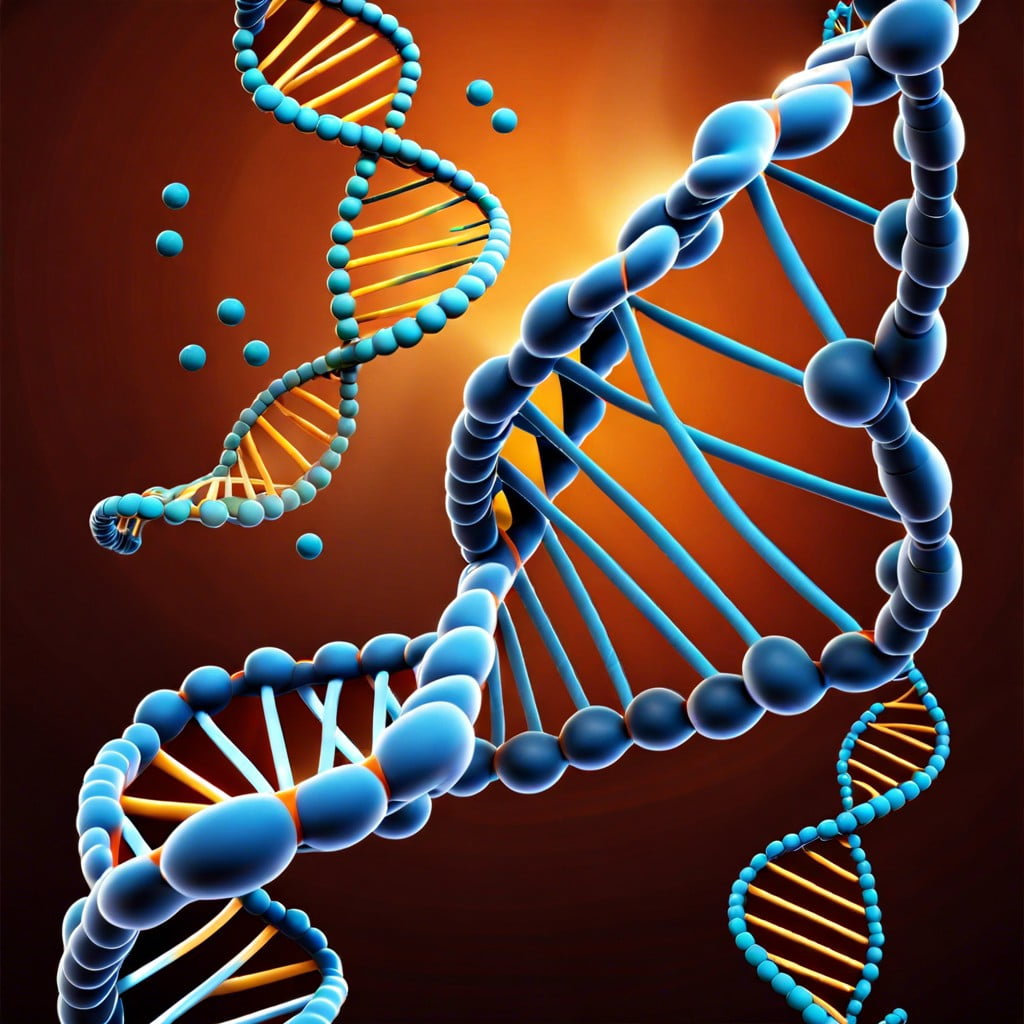Learn what polymer nucleic acids are and their significance in modern science and technology.
Key takeaways:
- Polymer nucleic acids are the building blocks of life.
- DNA’s double-helix structure holds the blueprint of life.
- RNA, the unsung hero, plays diverse roles in protein synthesis.
- Genomic DNA contains modified nucleosides that add layers of meaning.
- Modification enzymes give DNA and RNA a stylish makeover.
What You Will Learn
Discovery of Deoxyribonucleic Acid (DNA)
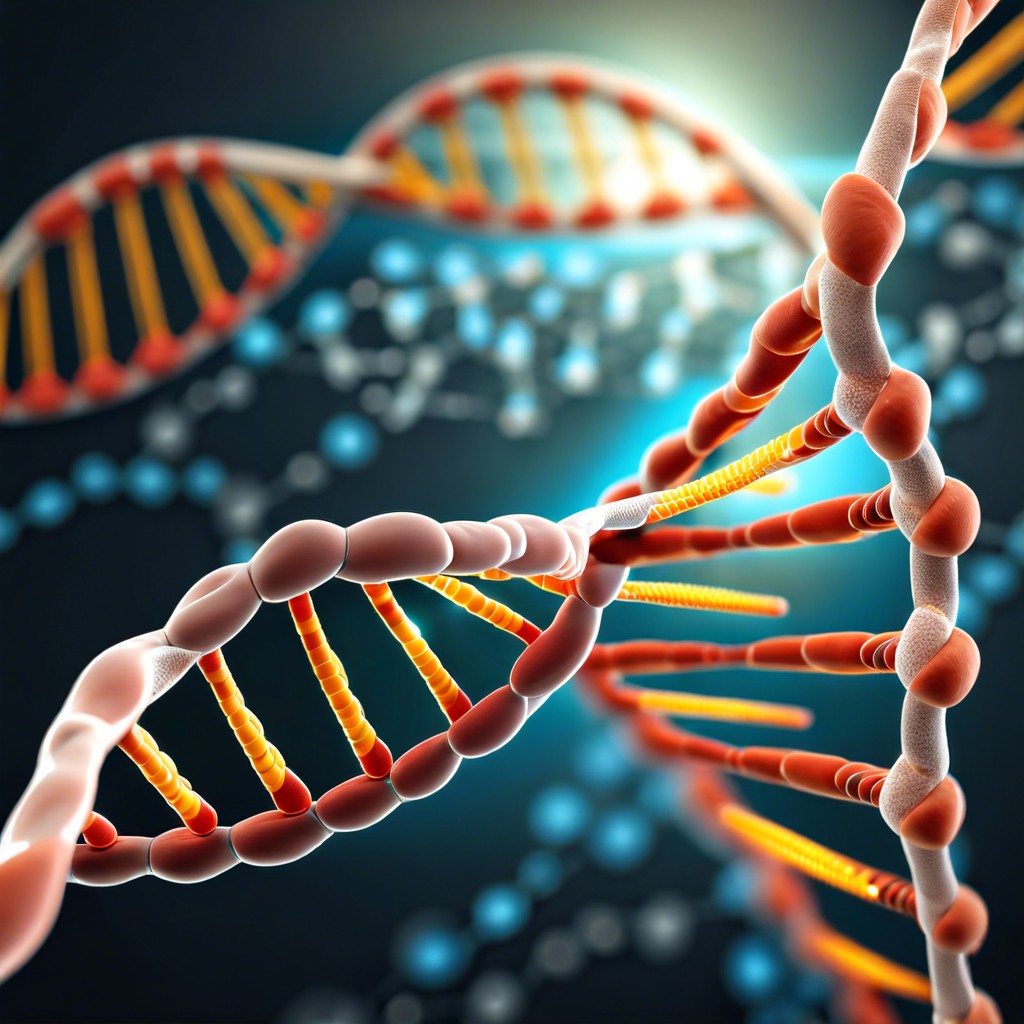
In the early 1950s, scientists were diving deep into the mysteries of life’s blueprint. That’s when James Watson and Francis Crick stumbled upon something extraordinary: the double-helix structure of DNA. Despite the complex name, think of it as a twisted ladder made out of sugar, phosphate, and four types of nitrogen bases.
Here are the fun bits:
- Sugar and Phosphate: These form the sides of the ladder, keeping everything sturdy.
- Nitrogen Bases: Adenine pairs with Thymine, and Cytosine pairs with Guanine. These pairs are the rungs of your ladder.
- Double Helix: Imagine twisting two ladders around each other; that’s DNA for you.
Now, our understanding of DNA might seem like an ancient relic, but this discovery wasn’t just a sleepy library find. It was more like opening a treasure chest of biological secrets! Before Watson and Crick, many theories floated around, but none hit the bullseye quite like this one.
So, next time you see DNA, picture an elegant twisted ladder full of nifty pairs working tirelessly to make you, well, you!
Discovery of Ribonucleic Acids (RNAs)
In the early 20th century, researchers stumbled upon these curious molecules, which we now call RNAs. Initially, they were overshadowed by their flashier cousin, DNA. Picture RNA as the unsung hero – the Robin to DNA’s Batman, if you will.
RNA molecules are like versatile Swiss Army knives. Here are some key findings:
- Messengers: Messenger RNAs (mRNAs) ferry genetic instructions from DNA to ribosomes, the cellular machinery that makes proteins. Think of mRNAs as the text messages sent from your phone – quick, essential, and oh-so-tiny.
- Structure: Unlike DNA’s double-helix, RNA usually moonlights as a single strand. However, it gets creative with funky loops and folds, everything short of an origami class.
- Enzymatic Action: Some RNAs, called ribozymes, can catalyze chemical reactions. Yes, you read that right. These molecules are like tiny James Bonds with licenses to react!
- Diverse Roles: RNAs also play various roles in gene regulation and protein synthesis. Small interfering RNAs (siRNAs) and microRNAs (miRNAs) act like tiny traffic cops, directing cellular processes with precision.
So, with RNA, it’s a bit like finding out your quiet, nerdy neighbor is actually a superhero by night. Who knew?
Modified Nucleosides in Genomic DNAs
In genomic DNA, there’s more than meets the eye. Sure, we all know about the familiar A, T, C, and G, but the plot thickens with modifications!
First up, methylation. This involves popping a tiny methyl group onto certain cytosines. If DNA were a novel, methylation would be the highlighter, emphasizing important passages and keeping out unwanted spoilers.
Then, there’s 5-hydroxymethylcytosine, the fancy cousin of methylation. Think of it as cytosine getting a refreshing new haircut. Scientists are still decoding its full story, but it’s clear it’s involved in gene regulation and brain function.
Don’t forget N6-methyladenine! Lesser known but equally cool, this modification adds a sprinkle of mystery – influencing everything from DNA repair to replication.
Finally, meet 5-formylcytosine and 5-carboxylcytosine. The quirky twins of the DNA world, popping up during DNA demethylation processes. They’re like the cleanup crew, crucial for turning methylated bits back to their base form.
Fun fact: DNA modifications are kind of like doodles in a textbook. They don’t change the text, but they add layers of meaning!
Nucleosides Found in Coding and Noncoding RNAs
Sure thing! Let’s dive into the wonderful world of RNA. It’s like a VIP club with two main types of members: coding RNAs and noncoding RNAs. Coding RNAs are the popular ones; they carry the genetic blueprints for making proteins. Think of them as the VIP passes that get you through the security gates at a concert.
Noncoding RNAs, on the other hand, are the behind-the-scenes crew. They don’t code for proteins but still play crucial roles. They’re like the sound engineers, stage managers, and lighting experts who make everything run smoothly.
Here are a few key members of this club:
Messenger RNA (mRNA): The headliner. It carries instructions from DNA to the ribosome, where proteins get made. It’s literally carrying messages.
Transfer RNA (tRNA): The roadie of the group. It helps decode the mRNA by bringing the right amino acids to the ribosome. Kind of like passing notes in class, but way more important.
Ribosomal RNA (rRNA): The venue itself. rRNA makes up the core of the ribosome’s structure and helps make proteins by providing a place where mRNA and tRNA do their thing.
MicroRNA (miRNA): The talent scouts. These small guys help regulate gene expression by binding to messenger RNAs and preventing them from making too many proteins.
Long noncoding RNA (lncRNA): The project managers. These can influence gene expression, help organize the genome, and even participate in cell signaling. They’re kind of like liaisons, keeping everything in order.
And that’s just scratching the surface. Each has its own job, making sure our cells run like a well-oiled machine. It’s like a concert where everyone has their part, and the show can’t go on without them!
RNA and DNA Modification Enzymes
Let’s talk about those invisible little helpers that get busy with DNA and RNA – the modification enzymes. These enzymes are like molecular barbers, giving nucleic acids a bit of a trim or a stylish makeover.
Here are some key points to make it clearer:
Enzymes like methyltransferases slap on a methyl group to DNA or RNA. Why? It’s like tagging a shirt in a store, marking it for a special function. This process can protect DNA from being chopped up by enzymes called restriction enzymes.
Then we have the deaminases. These folks are like molecular graffiti artists, changing the base adenine to inosine in RNA. This can affect how the RNA is translated into proteins. Pretty neat, right?
Endonucleases are the internal cutters. They snip DNA and RNA at specific spots, which is useful in repair processes and during DNA recombination. Like expert chefs cutting precise sushi rolls, they ensure everything is just right.
Don’t forget the kinases. They’re all about attaching phosphate groups to RNA. This modification can affect the RNA’s stability and its role in various cellular processes.
Lastly, we can’t leave out ligases. They’re the stitches in the fabric – joining broken strands of DNA back together. Handy after the DNA has been cut for repair or recombination.
These enzymes are microscopic maestros, orchestrating the fine-tuning of DNA and RNA to keep cellular processes harmonious.
Related reading:
